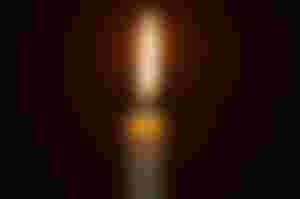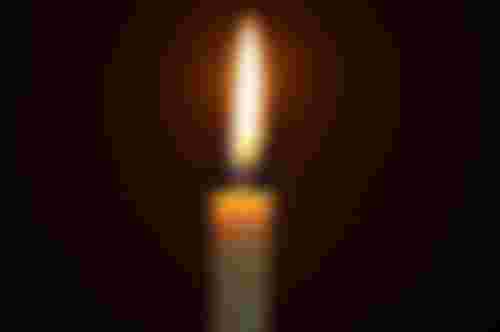Have you ever tried to enter a very dark room? Or have you already closed your eyes and tried to do your daily activities? You may have found this quite scary. It's a real relief to see the light!
The sun is our main source of light. Every second every day, it converts four million tons of its matter into energy. This is sprayed in all directions from the surface at over 186 000 miles per second! But how are these emissions? How do they let you see? And how can we see so many different colors?
What the sun gives
Solar emissions are called "electromagnetic energy" or "radiation". This radiation is often seen as a stream of small particles. At the same time, it is also considered a wave motion.
Although all radiation, including light, comes from the sun at the same rate, they are not all the same. There are many types. Some types of radiation have very long wavelengths, measured in miles. Others have very short wavelengths, measured in small fractions of millions or even thousands of thousands of inches.
Longer wavelength radiation includes heat waves and very long radio waves. And the shortest rays from the sun include ultraviolet rays, X-rays, gamma rays and very short cosmic rays. But none of them are visible to the human eye, which is why they are sometimes called invisible light. However, there is a very narrow range of visible wavelengths between the longest heat waves and the shorter ultraviolet waves. So the part we see is just a very narrow band in a wide range of wavelengths, from cosmic rays to radio waves to electric currents.
Radiation hits the ground
Not all the radiation that the sun sends to the earth reaches here. This is because the Earth's atmosphere acts as a protective shield. So what hits the earth is essentially the wavelengths of visible light with a narrow band of invisible waves. How happy we can be that our atmosphere blocks most of the invisible radiation, because if it could hit the earth, it would kill us all!
On the other hand, we can be grateful that visible light floods our country with such abundance. Plants get energy from light and use it to convert carbon dioxide and water into simple sugars, which form the basis of all food. Without this light energy, plants could not grow and nothing could live on earth.
Wavelengths that give color
But the light gives us much more.It blesses us with wonderful colors and beauty. What is so remarkable is that the range of visible wavelengths that give us light and many colors is so narrow. These wavelengths measure about thirty-two million inches above what our eyes see as red, down to about sixteen million inches, which we see as purple.
If you travel at the speed of light like these rays, the number of waves that reach the eye is between about 375 million and 750 million per second. The human visual system interprets this vibration as light, with the color corresponding to the frequency of the vibrations.
The many colors in light

Does it seem strange to you that this candle consists of different colors? You thought it was all white. Well, it generally looks white to our eyes because all wavelengths of visible radiation move together. They are not separate. When the wavelengths are separated, we can see their individual colors.
You can check it out for yourself at some point. It can hold a durable and shiny disc and look along the finely ribbed surface. The light is folded and you can see the different colors of the light. Or after a storm, you saw drops of water in the air that refracted sunlight in their primary colors (purple, blue, green, yellow, orange, and red) and created a beautiful arc. in paradise.
This does not mean that the light can only be separated in these few colors. In fact, it can be broken down into tens of thousands of different wavelengths, each producing a different hue or hue than the primary colors! However, the eye cannot distinguish between the color of one wave of light and the color of another wave if they are too long.
Studies have shown that the human eye can distinguish around 128 different shades of color in visible light. But to distinguish these many too, one wavelength of light has to be projected onto a screen, and before it is removed, another with a slightly different wavelength has to be projected to the side. Only through visual comparison can the eye tell the difference between more than a hundred colors in visible light.
The colorful fountain
Look at the printed page for a moment and carefully watch some things around you, perhaps a bookcase, table, or even the floor. Isn't it surprising what colors there are? But where do all the colors come from?
The paint isn't on the table, floor, or any other object you've seen. It is true that we can speak of these things with a certain color. But the truth is, we don't live in a world of colored objects. The color of things really lies in the light that illuminates them. Light is the only source of color and without light there is no weaker color.
That looks great
But how do you see light with its innumerable wavelengths of colors?Light cannot be seen moving through space, nor can radio waves and other radiation. What light makes visible to the eyes are the material substances it falls on.
For example, if we are in a room with no dust particles or even air, we cannot see the beam of light or the path of a flashlight, if there is one. A ray of light in a vacuum is completely invisible. When the astronauts looked out the windows in space, they could see the bright sun, but the sky was dark. Black is the lack of light or color. The sun didn't illuminate the sky because space doesn't contain any substance that sunlight can fall into. We can only see light when it hits an object that reflects its waves in front of our eyes.
What makes an object a certain color? Why are most plants and trees green and the sky generally blue? And why does the sky sometimes turn orange or dark red on the horizon at night?
It creates color in the sky
Our sky is filled with air and small particles of vapor and dust. We already mentioned that the atmosphere protects us from deadly radiation. It acts like a giant mirror that reflects most of this radiation back into space. Although light penetrates this shield, many of its waves are scattered by air particles. The size of these particles is such that the shorter blue waves propagate much more than the others. Hence the sky is blue in color.
But when the sun is close to the horizon, it can be different. The more horizontal angle of sunlight, shining in a dusty atmosphere, tends to diffuse longer waves of light, making the sky appear deep orange and red. After the Krakatoa volcano exploded violently in 1883 and dispersed dust particles in the earth's atmosphere, the world saw a series of amazingly beautiful sunrises and sunsets in 1883.
How most colors are produced
However, the scattering of certain wavelengths of light is not the primary form of color production. Most objects get their color by absorbing certain wavelengths of light and reflecting others.
For example, most plants and trees are green due to the special arrangement of pigment molecules in chlorophyll. When sunlight falls on chlorophyll, most of the shorter purple and blue waves of light are absorbed, as are most of the longer red waves. These light wavelengths are used by plants and trees for food production. However, waves of green light are mostly reflected, which is why we see green plants and trees.
The colors of artificial objects such as paints, stains and paints are manufactured in the same way. Its pigment molecules absorb certain wavelengths, or we can say that they subtract some of the narrow light band. Therefore, they reflect the part that is neither absorbed nor removed. Therefore, it is the combination of the reflected wavelengths, that is, the mixture of all colors that are not absorbed by light, that gives color to most objects that we see.
Consequently, a red dress is red because the ink absorbs or subtracts other wavelengths and reflects the red light. Asphalt is black because its pigment molecules absorb all wavelengths and reflect very little. On the other hand, we see an object as white if it reflects all the light colors that make up white equally.
In fact, pigments reflect at least some wavelengths in all colors. In theory, if two colors reflected only one wavelength each, when mixed, it would result in black. But as it is, we can mix the blue and yellow color and get the green color. This is because the color blue also reflects green light and the color yellow also reflects green light. When mixed, the blue light is absorbed by the yellow pigment and the yellow light is absorbed by the blue pigment. This reflects the green light that is common to both and creates a green color!
The different combinations of light that are reflected by the things around us stimulate the imagination. Since no wavelength is completely absorbed, we see the world around us in a beautiful color palette. There are an estimated ten million colors!
One factor that determines the color of an object, as well as how it absorbs and reflects light, is the type of light itself. The energy of sunlight is evenly distributed in all colors, but this is not the case with artificial light. Fluorescent lamps that are often used in stores are powerful in blue light. However, lamps do not have a blue wavelength and therefore emit a yellowish light. This can affect your purchase.
For example, you can buy a red dress in a store that sells fluorescent lamps. But when you are in the sun, you will be amazed at how much redder the dress really is. This is because fluorescent lamps with a concentration of blue light do not provide enough red wavelengths to reflect the dress. Or think about buying a black dress at a lamp store. But when you are in the sun, you see that it is blue. In the store, the light bulb did not give blue wavelengths for reflection, and since the suit absorbed all other wavelengths, it appeared black.
Colors with different methods.
There is another important method used to create colors, which is the structure of certain objects. Many of the most beautiful colors that living things show are the result of how their bodies refract light into waves.
For example, imagine a metallic blue butterfly when viewed from above, but it looks purple when viewed over the wing. The different colors are created in the way that the light bends through the angled surface of your wing. This can be proven. The soft wax can be pressed against the blue wing and the wax changes the color of a butterfly. But when the surface of the wax is evened out, the color disappears!
In fact, the light blesses us with so many good things. Life itself depends on the sun's rays bathing our planet.

It’s a beautiful view